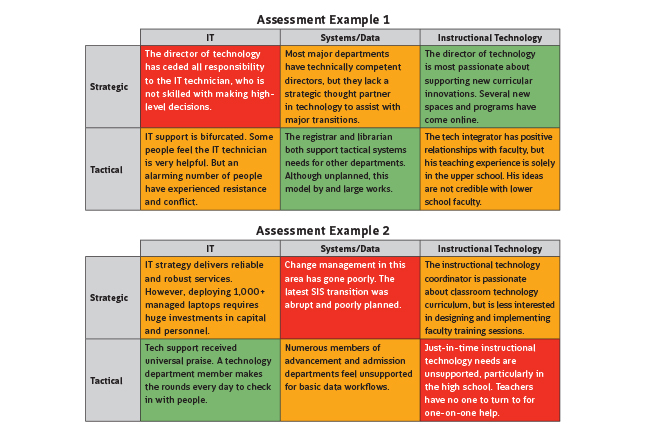Article by Gabe Lucas, Ed Tech Recruiting
On the TV show Love It or List It, two frustrated homeowners are at odds. One wants to sell and get out; the other wants to remodel and stay. Similarly, a leadership team sometimes has a difference of opinion about its technology program.
Both paths are not without perils. Pushing the restart button on equipment, software and personnel is expensive — financially and politically. But minor adjustments alone could leave fundamental problems in place.
There’s nothing worse for a CFO than staring at a multi-page to-do list of unorganized minutiae involving acronyms and random software.
Before taking action, get a handle on the issues at hand. You could order an IT audit — but that’s expensive and may be more than you initially need. Most schools would be better off starting with a high-level strategic assessment, which a leadership team can run internally if everyone agrees on a comprehensive evaluation framework. There’s nothing worse for a CFO than staring at a multi-page to-do list of unorganized minutiae involving acronyms and random software.
Developing a Framework
When facing this scenario, ask your tech director to articulate a management framework — a tool for summarizing and evaluating all technology operations.
The simple matrix below shows what I use when consulting with schools. The idea is to divide technology services into three functional areas, and assess each area through both a strategic and tactical lens. The simplicity of this approach resonates with leadership teams struggling to aggregate disparate observations into high-level conclusions. This model also works for departments of any size.

I arrived at this framework because educational technology no longer neatly fits into the two halves of IT and instructional. However, for the sake of executive management, it’s useful to maintain a compartmentalized structure. The arrows and dashed lines symbolize the ever-expanding systems area; today few technologies are purely IT or instructional.
For each cell in the matrix, identify who (employees, contractors, temps) and what (space, software, capital) are involved. You can now ask questions such as, “Where have we deployed our resources?” and see the larger picture.
Identifying Priorities
Once you have your framework, you’re ready to assess. Evaluate budgets, policies, space and hardware, but be sure to review your staff as much as you do the stuff. To do so, conduct interviews with a cross-section of your community, record where end-user needs are and are not being met, and identify patterns based on your evaluation framework.
The two assessment examples below demonstrate how a school might go about this process.

Each school has assessed which areas are functional and which areas need attention. Red areas indicate high-priority problems, yellow lesser-priority problems and green areas are functional.
Be careful about assigning blame too quickly to tactical resources. I remember a teacher who complained that the IT technician “never fixed the classroom projector.” Digging further, I discovered that the classroom desktop attached to her wall-mounted TV was five years older than her school-issued laptop. Her “broken projector” was actually a failed system of two incompatible computers. Although tactical support let her down, so did high-level strategy by not replacing aging equipment — and by continuing with an outdated model of classroom desktops.
If you see an unusually high number of challenges in one particular functional area, you have a starting point for resolving them. A house analogy can again help you consider your alternatives:
- IT is like the roof or plumbing. It’s annoying when things break, and solutions to problems almost always depend on your budget.
- Instructional tech is like interior decorating. It’s temping to keep upgrading, but sometimes you have to pause and give improvements time to set in.
- The data/systems environment is like the layout of a house. Changes are complex and time consuming — requiring architects and project managers — and may seriously disrupt operations for months or longer. Be forewarned this functional area requires the most adept change-management skillset by far.
No matter your assessment tool, you still might face that “love it or list it” moment. But with the right framework, you can be assured that your decision will be more empirical than emotional — just as most of us wish our first home purchase had been!
Gabriel Lucas is principal of Ed Tech Recruiting, which helps schools assess their technology staffing needs, recruit senior technology leaders and manage complex technology transitions.
Download a PDF of the article.



